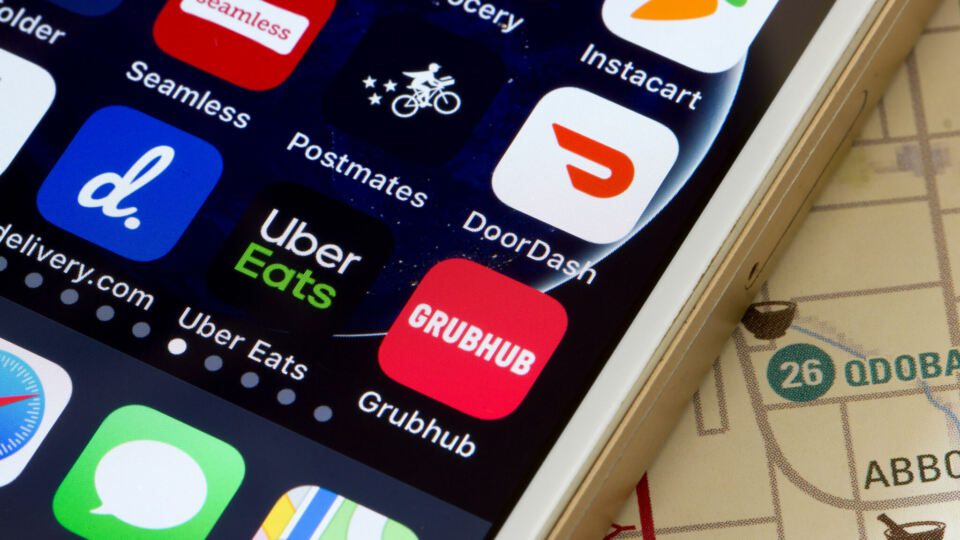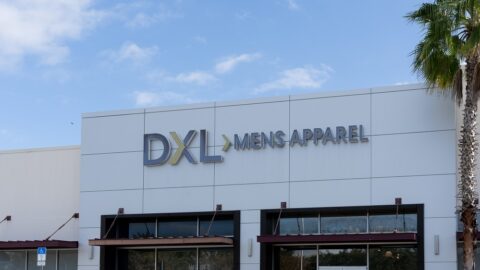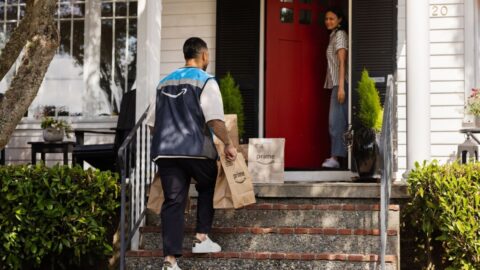The last mile has become a more crucial part of the entire customer experience, particularly the delivery portion. Amazon Prime was the first entity to raise the delivery stakes, but soon its promise of two-day delivery became next-day delivery. Then next-day delivery became same-day and even one-hour delivery.
With each tightening of the delivery window, consumer expectations rose accordingly — not just for Prime members but for a wide swath of ecommerce shoppers. In fact, 42% of consumers now expect two-day shipping for every online purchase they make, and 77% are more likely to purchase an item if it can be delivered in two days or less, according to Ware2Go research. Many consumers (69%) even said they were inspired to click on display ads touting fast and free delivery services, proving that delivery is no longer the “cherry on top” of the customer journey but rather a powerful accelerator.
It’s hardly surprising, then, that funding is being poured into this quickly evolving space. By 2027, the global last mile delivery market is expected to reach more than $200 billion, nearly double what it was in 2020. But how can retailers best navigate this space and determine which partner or partners are right for them? Expert insights can be distilled into three core questions that executive teams should get answers to:
• How can I break down this expanding market and all its key players?
• Is it better to tap a partner, build out capabilities internally or acquire a vendor?
• What brand and customer service risks that do we need to consider?
1. How can I break down this expanding market and all its key players?
The delivery and last-mile vendor markets are growing rapidly. In a market map, CB Insights plotted more than 95 private companies alone that focus on the “last-mile delivery optimization” space. To make understanding the landscape and developing a plan less cumbersome, retailers can break the space down into two categories: third-party delivery services such as Uber, Instacart and DoorDash, and instant delivery providers like JOKR and Gopuff that are driving the same-day delivery space.
While Gopuff has certainly gotten its fair share of buzz, this has largely been due to its investment in private-level product development. Beyond its delivery services, Gopuff is becoming a retailer in its own right, creating an added revenue stream and source for more reliable growth. As a result, it is in some ways becoming a competitor to the retail clients it is trying to court.
“Vertical integration is the name of the instant delivery game,” explained Anne Mezzenga, Co-CEO of Omni Talk. Companies like Gopuff and Buyk “are starting with owned brands, but I wouldn’t be surprised if we start to see acquisitions in other areas like commercial kitchens, autonomous vehicles, media networks and more in order to drive new sources of revenue.”
However, experts agree that the third-party delivery services are the partners to prioritize, at least in the short term, as retailers work to build out their delivery ecosystems. “Uber, Instacart and others are a quick solution for retailers now,” Mezzenga explained. “They allow the retailer, without building any additional infrastructure, to provide their customer with the standard of quick delivery they’ve normalized throughout the pandemic.”
But is there a clear winner that retailers should prioritize? The answer is “not quite.” It really depends on the goals of the business and the overall market reach of each provider. That hasn’t stopped these players from puffing their chests, though. While Instacart leads in grocery, it developed a successful partnership with Sephora during the heart of the pandemic. In response, Uber is focusing on building its retail client base.
“I think it’s going to be a fragmented market and Instacart will continue to be a leader in grocery,” said Rick Watson, Founder and CEO of RMW Commerce Consulting. “DoorDash has the most promise for meal delivery just because that is the biggest market. While it is attempting to compete with Instacart, it won’t be immediately successful due to Instacart’s position in the grocery store market.”
2. Is it better to tap a partner, build out capabilities internally or acquire a vendor?
Over the course of the pandemic, Target has become a clear leader, and innovator, in all things last mile. The retailer’s acquisition of Deliv and Shipt has undoubtedly supported the retailer’s stellar performance. Meanwhile, Walmart is focused on bolstering its last mile capabilities and has started offering its delivery services to other brands à la Amazon.
While it may be tempting to try and build these capabilities internally, retailers take note: it is expensive. CB Insights noted that last mile delivery can account for up to 28% of a good’s total cost, and retailers also need to find drivers, manage liability and deal with rising energy prices, among other issues. Even Amazon-powered Whole Foods had to nix its free same-day grocery delivery services due to the astronomical costs.
“These services are expensive to build and scale,” Watson said. “Most retailers, excluding the top ones, should not attempt this due to the cost. They should use an existing provider.” He explained that building out a diverse network of partners gives retailers the power to test different options and maximize their reach, while “having all your eggs in one basket leaves you with few options.”
Diversifying could also create a possible branding opportunity. Vendors like Instacart and Uber are expanding their marketing and advertising services, creating an opportunity for partners to drive awareness and conversions through their apps. But Watson noted that this development could prove to be a double-edged sword: “All the players are making investments in advertising and mobile, but the big problem that retailers have with partnering with these players is that most of these users don’t become customers of retailers, they just use the apps.”
3. What brand and customer service risks do we need to consider?
The biggest upfront risk of investing in multiple delivery partners is that, like developing these capabilities in-house, it can be very costly. However, there are other complexities that retailers need to prepare for as they expand their network of providers. The biggest? Managing customer expectations.
“I think the big problem is monitoring the service that their customers are receiving,” Watson explained. Mezzenga also called out this issue, noting “there’s no guarantee that your brand promise will be represented by a gig worker who works for Uber, Instacart and DoorDash. It comes down to cost and operational efficiency. Are these delivery services better equipped to serve the needs of your customers than you are, and is it worth giving up the direct connection to the customer?”
Hawkins added that this uncertain “ownership” over the customer experience can ultimately impact shopper perceptions and loyalty, creating tension between a retailer and its delivery partner. He asks: “If the delivery runs late and the ice cream melts, who is that going to reflect on, the retailer or the gig delivery partner?”
Hawkins added that retailers need to think critically about whether they want to own customer engagement and if they are truly willing to let a partner take over that digital connection. This is especially true with advertising, an area that companies like Instacart are really looking to monetize.
Another challenge that may impact the long-term ROI and value of these partnerships is the data, or lack thereof, that delivery providers share with their retail partners. “There is limited data on these customers being shared by these platforms and apps,” Watson explained. “Some of them are better at integrating with retailers’ technology systems than others. It’s a good idea to prepare for testing with these services.”
Final Guidance from the Experts
The delivery space is quickly evolving. The dominant players are rapidly building out their capabilities, gig startups are trying to scale, and Tier 1 retailers are innovating within the four walls of their headquarters. As retail execs plot their next move, experts offered these closing words of advice:
- Anne Mezzenga, Co-CEO, Omni Talk: “Until retailers know the provider and model that works best for them, it makes a lot of sense to test delivery with multiple vendors. It causes some logistics issues at the start, but nothing that can’t be solved. If the mom-and-pop restaurants can figure out how to manage multiple delivery providers, shouldn’t our larger grocers and retailers?”
- Rick Watson, CEO and Founder, RMW Commerce Consulting: “The big four to consider are Instacart, Uber, DoorDash and Shipt. For many businesses, it is more about which to choose first. In grocery, for instance, Instacart is still the best company due to its reach and grocery specialization; a restaurant might choose DoorDash first, which is the segment leader. It is definitely a viable option to choose all of them after first selecting the one that fits best for your industry.”
- Gary Hawkins, CEO, Center for Advancing Retail & Technology: “I think as much as possible, retailers partnering with gig companies should be focused on owning, or at least co-owning, as much data as possible. Then they should focus on owning or co-owning digital engagement opportunities and look for revenue share arrangements related to any advertising revenue driven from that digital engagement.”













